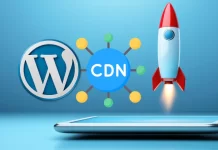Manual WordPress Installation via cPanel at New Domain Name
WordPress remains one of the most popular content management systems (CMS) for building websites, largely due to its flexibility and ease of use. If you’re looking for more control over the installation process, setting up WordPress manually via cPanel is a great option. This method allows you to configure your WordPress site to meet specific needs, such as customizing your database or optimizing security settings. While more technical than one-click installations, this approach gives you a greater sense of control over the site’s foundation and functionality.
Step-by-Step Guide to Manually Install WordPress via cPanel (2026)
Installing WordPress manually via cPanel gives you more control over the process and customization options. Here’s a comprehensive step-by-step guide to help you set up WordPress on your domain.
Step 1: Download WordPress
-
Go to WordPress.org and click the Download WordPress button to get the latest version of the software.
-
Save the file as a
.ziparchive on your computer.
Step 2: Log in to Your cPanel
-
Access your cPanel by visiting
yourdomain.com/cpanelor using the URL provided by your hosting provider. -
Enter your username and password to log in.
Step 3: Create a MySQL Database
-
Inside your cPanel, locate and click the MySQL Databases icon in the Databases section.
-
Under Create a New Database, enter a name for your database (e.g.,
wordpress_db) and click Create Database. -
Scroll down to the MySQL Users section, create a new user by entering a username and strong password, and click Create User.
-
Next, under Add User to Database, select your newly created user and the database you created, then click Add.
-
On the next screen, check All Privileges and click Make Changes to grant the user full access to the database.
Step 4: Upload WordPress Files
-
In your cPanel, locate and click the File Manager in the Files section.
-
Open the public_html folder (or the folder where you want WordPress installed).
-
Click the Upload button in the top menu, select the WordPress
.zipfile you downloaded earlier, and upload it. -
Once uploaded, go back to File Manager, locate the
.zipfile, right-click it, and select Extract. This will unzip all WordPress files into the folder.
Step 5: Run the WordPress Installation Script
-
Open your browser and go to
yourdomain.com/wp-admin/install.php. -
You will be prompted to select your language. Choose your preferred language and click Continue.
-
Next, you’ll be asked to enter your database name, username, and password (the MySQL database info you created in Step 3). The database host should typically be
localhost. -
Click Submit, and WordPress will verify the database connection.
-
Once the connection is successful, click Run the Install.
Step 6: Configure Your WordPress Site
-
After WordPress installs, you’ll be prompted to enter some site details:
-
Site Title: The name of your website.
-
Username: Create a strong admin username.
-
Password: Choose a strong password for the admin user.
-
Email: Enter your email address.
-
Search Engine Visibility: Choose whether you want search engines to index your site or not (you can change this later).
-
-
Click Install WordPress to complete the installation.
Step 7: Log in to Your WordPress Dashboard
-
Once installation is complete, you’ll see a success message. Click the Log In button.
-
Enter the username and password you created during the setup to access your WordPress dashboard.
Step 8: Customize Your WordPress Site
-
Now that you are logged into your WordPress admin area, you can begin customizing your site.
-
Choose a Theme: Go to Appearance > Themes and install a theme that fits your site’s style.
-
Install Plugins: Go to Plugins > Add New to install essential plugins for SEO, security, backups, etc.
-
Add Content: Go to Posts > Add New or Pages > Add New to start creating content.
-
Adjust Settings: Navigate to Settings > General to configure basic site settings like your site’s title, tagline, and time zone.
-
Step 9: Secure Your WordPress Site
-
Install a security plugin like Wordfence or Sucuri to secure your site from potential threats.
-
Regularly update WordPress, themes, and plugins to ensure your site remains secure.
Step 10: Back Up Your WordPress Site
-
It’s important to regularly back up your WordPress site. Use plugins like UpdraftPlus or BackupBuddy to automate the backup process.
To begin, you’ll first need to download WordPress from the official site, WordPress.org. After logging into your cPanel, you’ll create a new MySQL database, which will serve as the backend for your WordPress website. Then, you’ll upload the WordPress files to your server using the File Manager. Once the files are uploaded, you can run the installer by accessing a specific URL (yourdomain.com/wp-admin/install.php). From there, you’ll enter the necessary database information, set up the site’s admin user, and proceed to configure the basics, including your site title.
After installation, you’ll be able to log into your new WordPress site. From here, you can further personalize the site by selecting a theme, adding plugins, and adjusting other settings. Customizing your WordPress installation can significantly enhance your site’s performance and user experience. You can also access various performance optimization tips, such as configuring caching settings and optimizing your database, ensuring that your website loads quickly and efficiently.





